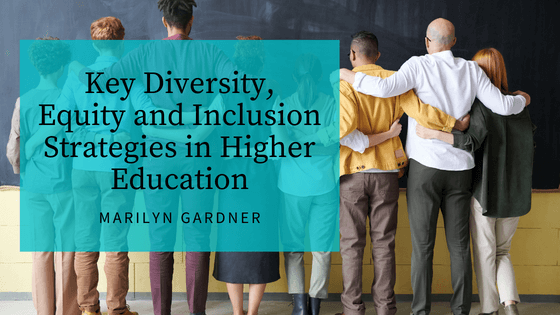Diversity, Equity, and Inclusion, or DEI, is a vital topic that anyone working in the recruitment, development, and advancement of higher education workers should be aware of. There are many steps that anyone can take to improve diversity, equity, and inclusion in higher education.
Listen to Feedback
A study revealed that many college presidents are aware of the concerns about racial diversity on their campuses. The survey also found that almost 90 percent of students have organized around racial issues. The study’s findings revealed that student-led efforts to improve racial diversity and inclusion on campuses would likely face similar future challenges. Listening to students from historically underrepresented groups can provide valuable insight into the issues that affect higher education.
Participate in Training Opportunities
Individuals and institutions should commit to becoming more knowledgeable on the various practices related to DEI. Several learning opportunities are available, such as conferences focused on racial diversity. Members can also participate in live and on-demand sessions and email and social media training.
Subscribe to Learning Resources
Several publications comprehensively cover diversity in higher education. These include the Journal on Diversity in Education and Diverse: Issues in Higher Education. The organization also publishes a twice-weekly newsletter that features news from leading sources on recruitment, diversity, and leadership.
Collaborate Between Departments
One of the most critical factors that a university or institution can consider when it comes to improving diversity, equity, and inclusion is collaboration. A well-defined plan and statement are not enough to ensure everyone is on the same page when creating a more inclusive and diverse environment. Besides creating a well-designed strategy, the collaboration also helps make the necessary changes in the institutional environment.
The complexity of campus structures and communities makes collaboration even more critical. Removing barriers that prevent collaboration can help create a transparent process allowing all stakeholders to participate in the various activities and conversations related to diversity, equity, and inclusion.
One of the most effective ways to collaborate with other institutions is through regional groups. These groups are designed to help foster collaboration among members. As a member of the organization, you will have access to various professional development opportunities and peer-to-peer discussions. In addition to these, you will also be able to create unique initiatives that will help improve your institution’s diversity and inclusion practices.
Be Vocal
Everyone is responsible for addressing higher education diversity, equity, and inclusion issues. If you are aware of an institution’s practices that do not align with the goals of creating an inclusive and welcoming environment, you should consider taking action. You can also contact the HR officer, campus ombudsperson, or Title IX director of your institution to help you make a difference.
